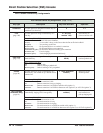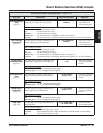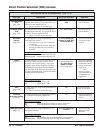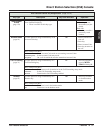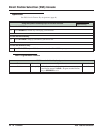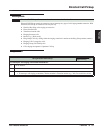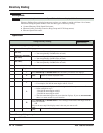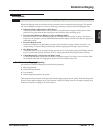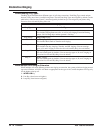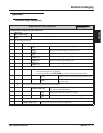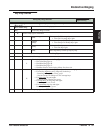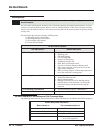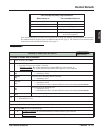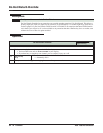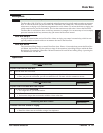
Distinctive Ringing
56 ◆ Features DSX Feature Handbook
Understanding Ring Types
The Ring Types determine how different types of calls rings extensions. Each Ring Type sounds unique
because it uses one of the 10 available ring tones. The first four Ring Types are assigned by default (see the
table below). The last two (B and C) are unassigned by default but you can assign on your phone using
Extension Override and Key Ring Override.
When Multiple Calls Ring an Extension
When multiple calls with different priorities are ringing an extension, the system prioritizes ringing accord-
ing to the list below. All LEDs will flash as appropriate for the type of call, but the telephone will ring only
for the highest priority call.
1. INTERCOM Key
2. Line Key (from lowest to highest)
3. Loop Key (from lowest to highest)
The Ring Types
Ring Type Call Type
Intercom Intercom ringing
This includes ringing Intercom calls, as well as calls ringing Extension Hunting
groups, Call Coverage keys and the operator’s Call key.
Ring Group Ring Group ringing
Recall Recall ringing
This includes Hold, Park or Transfer recall ringing.
Ring “A” Type A ringing
This includes line key, loop key, Transfer, and DIL ringing. (You can reassign
types A, B, and C ringing in Extension Override and Key Ring Override below.)
Ring “B” Type B ringing
Not used (unassigned) by default. (You can reassign types A, B, and C ringing in
Extension Override and Key Ring Override below.)
Ring “C” Type C ringing
Not used (unassigned) by default. (You can reassign types A, B, and C ringing in
Extension Override and Key Ring Override below.)



